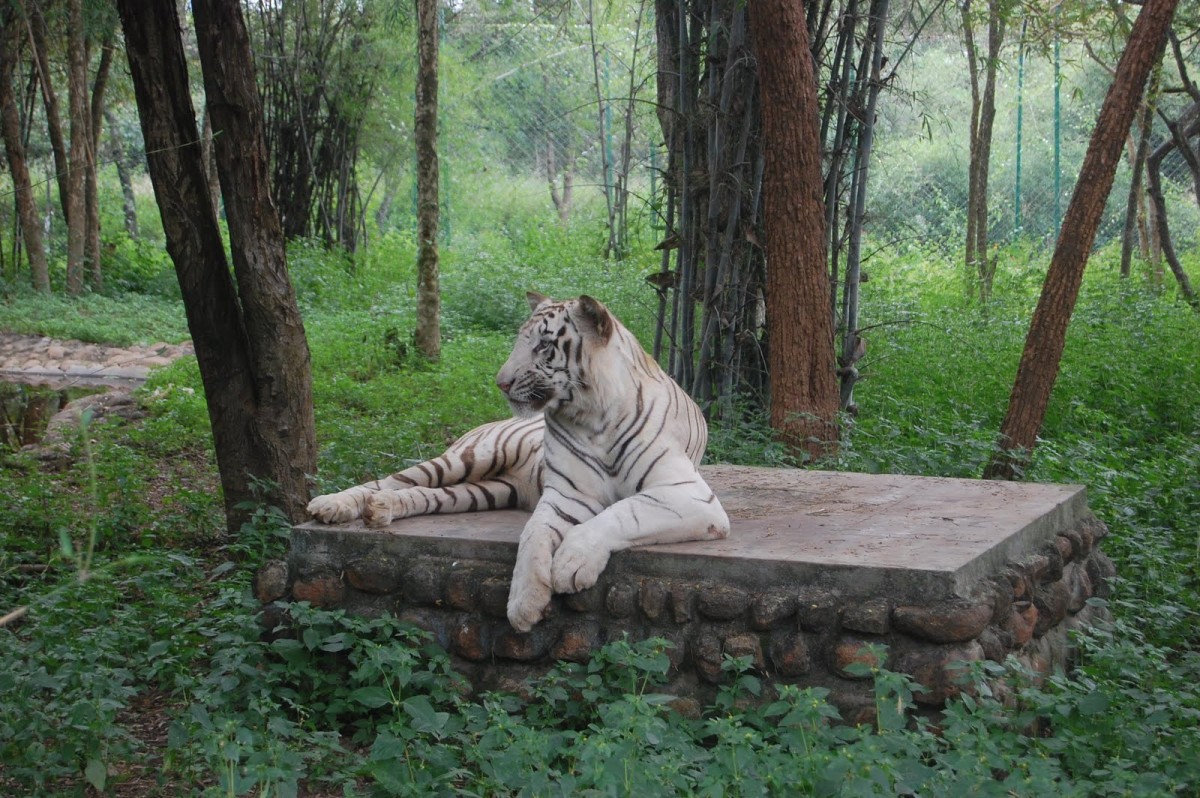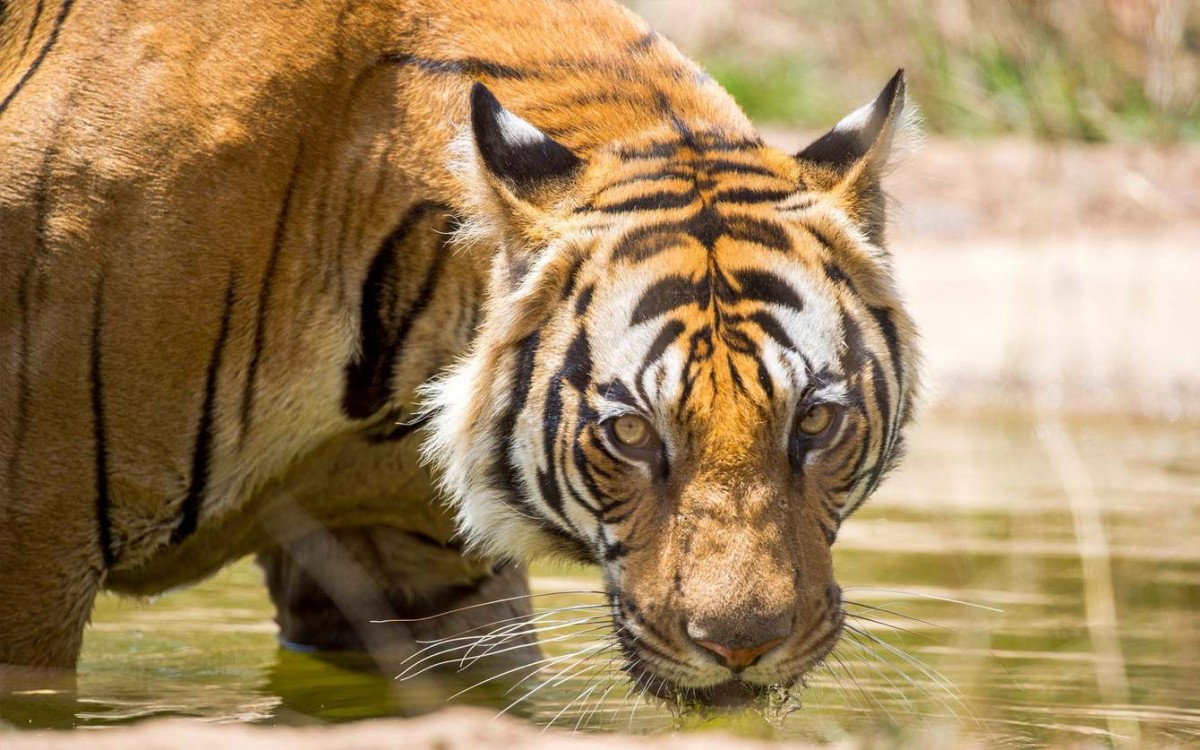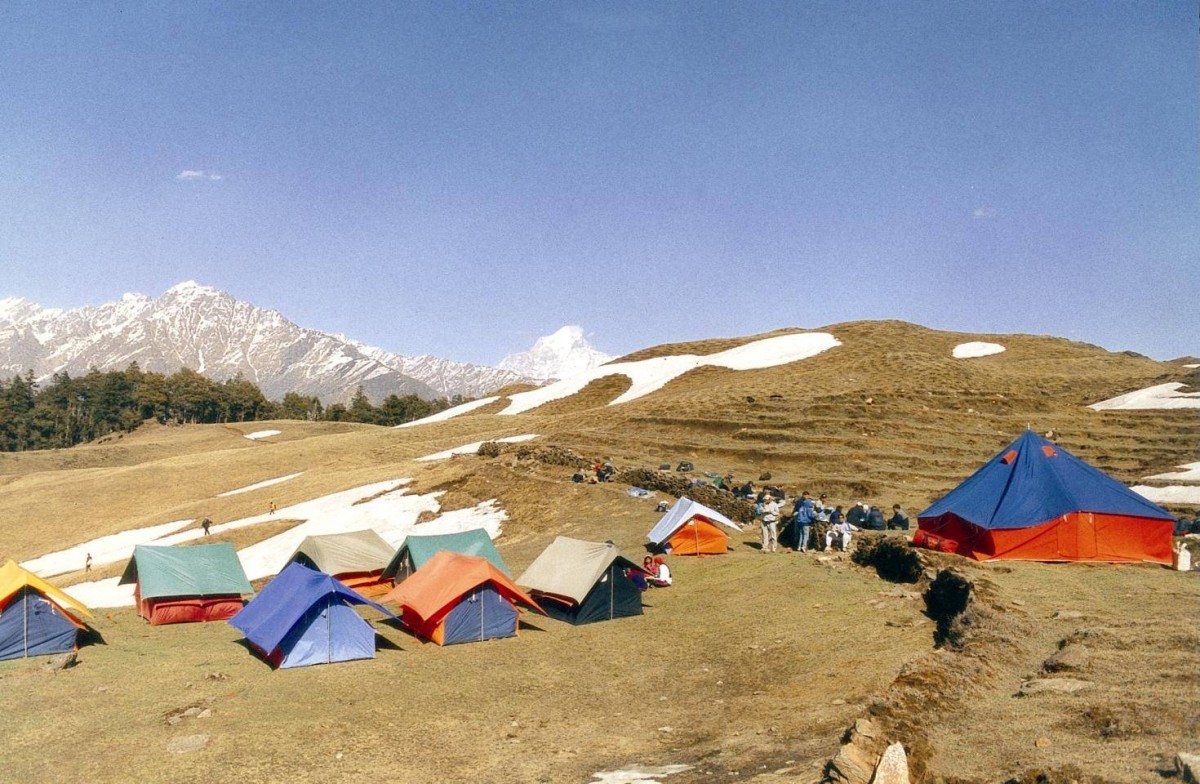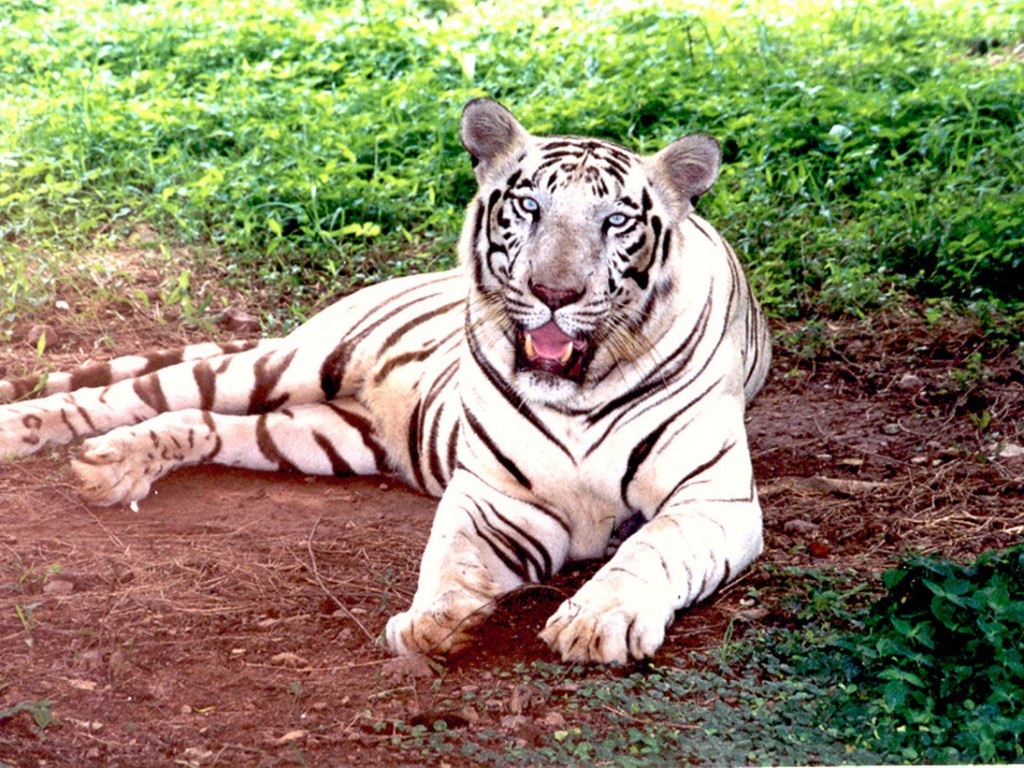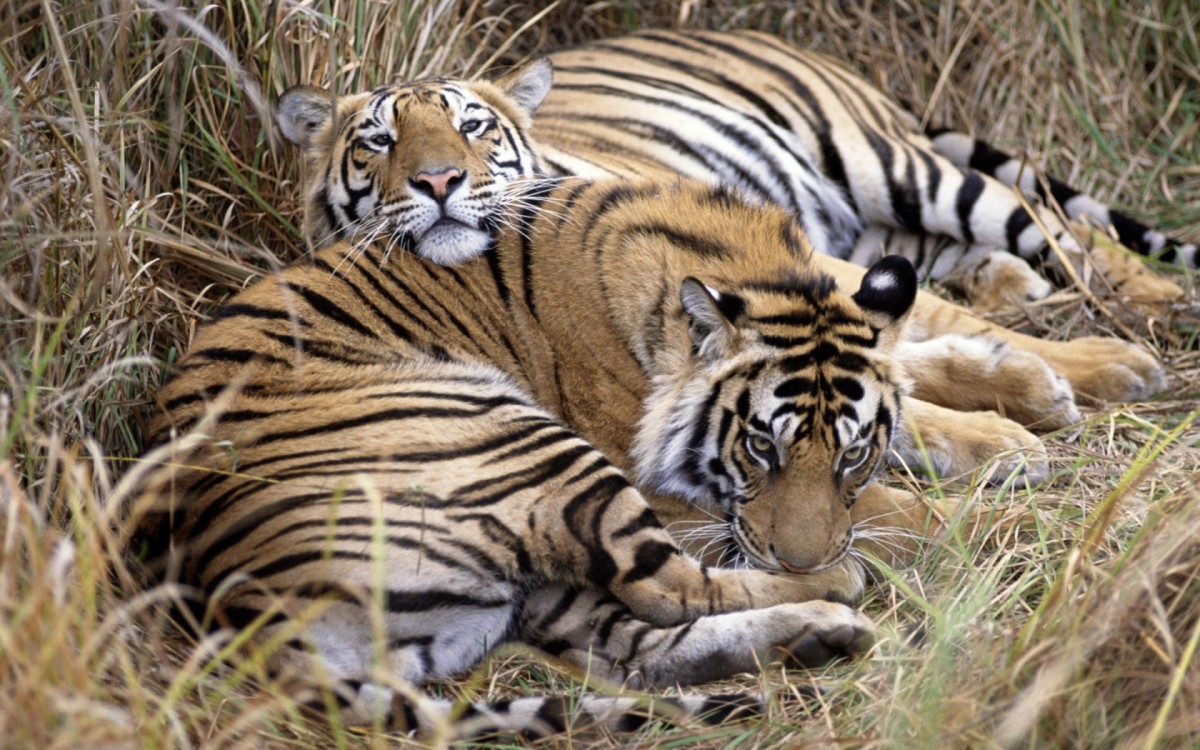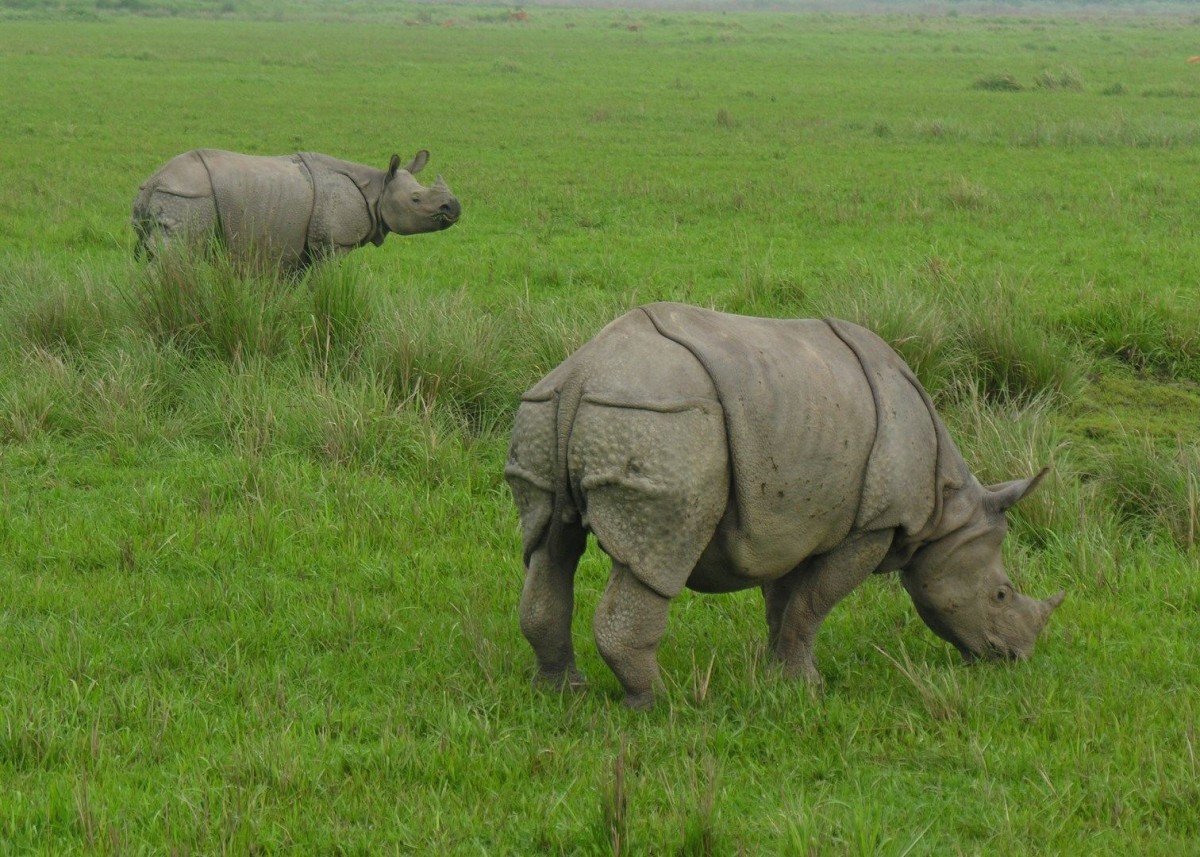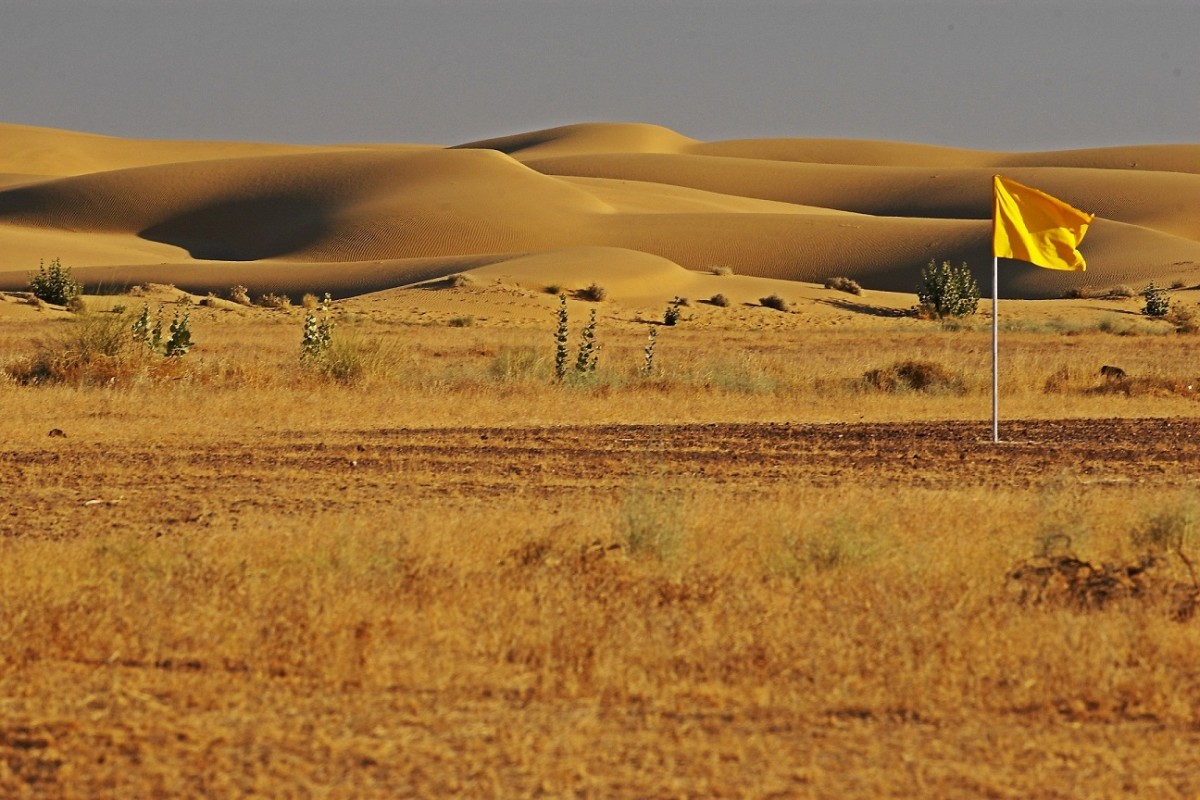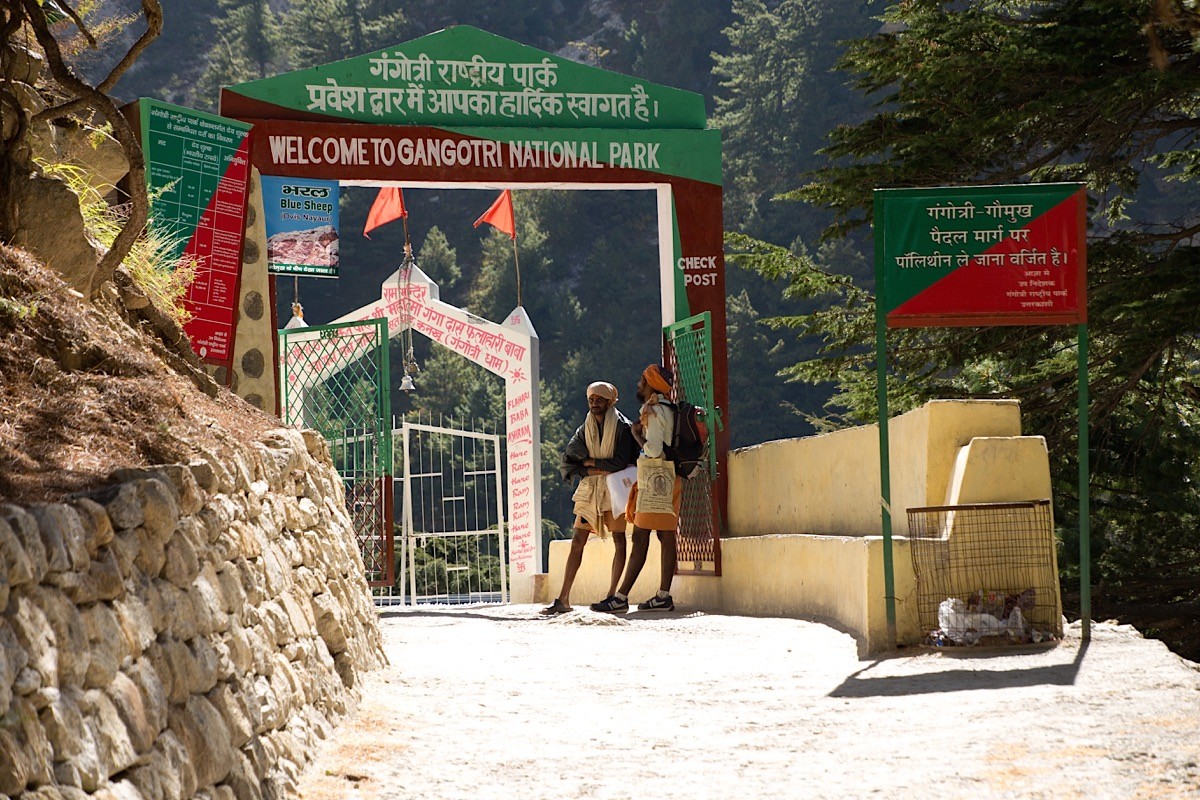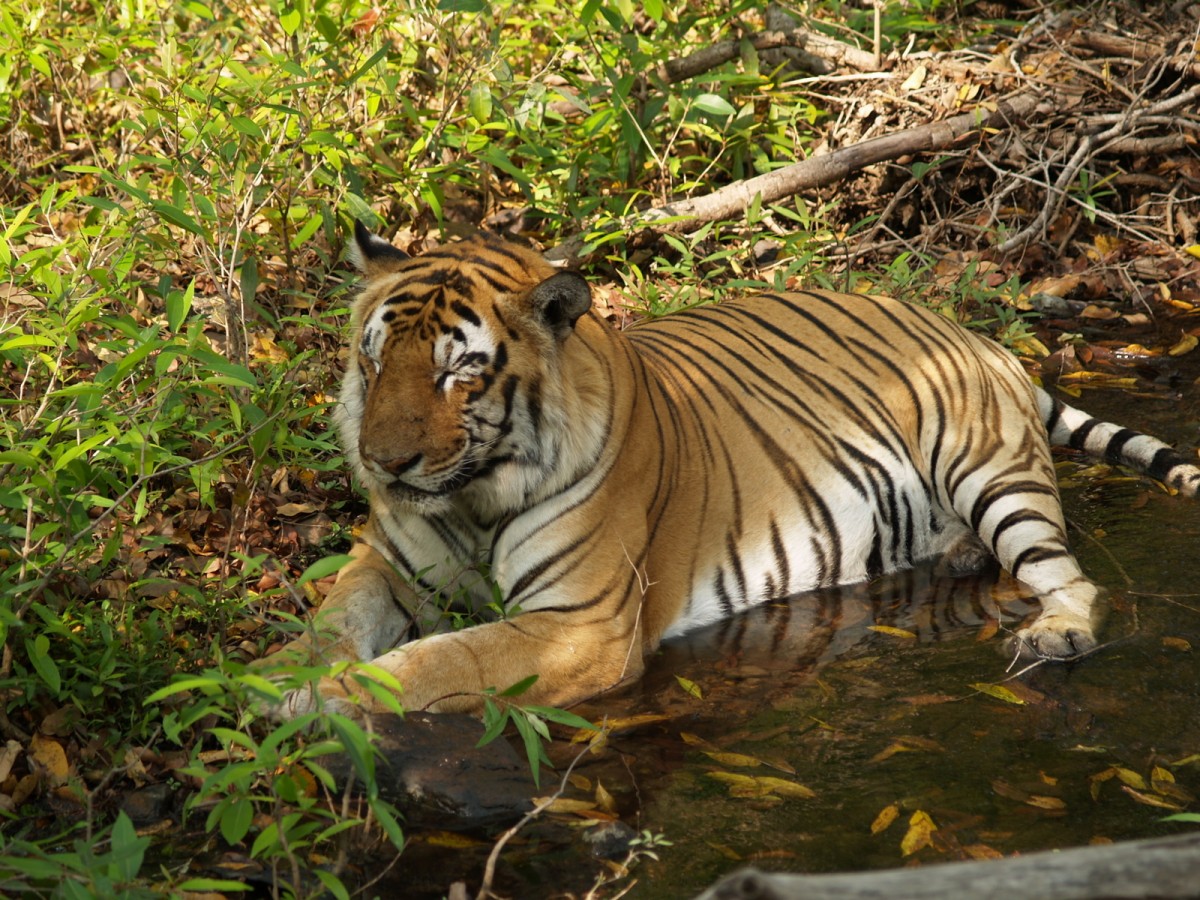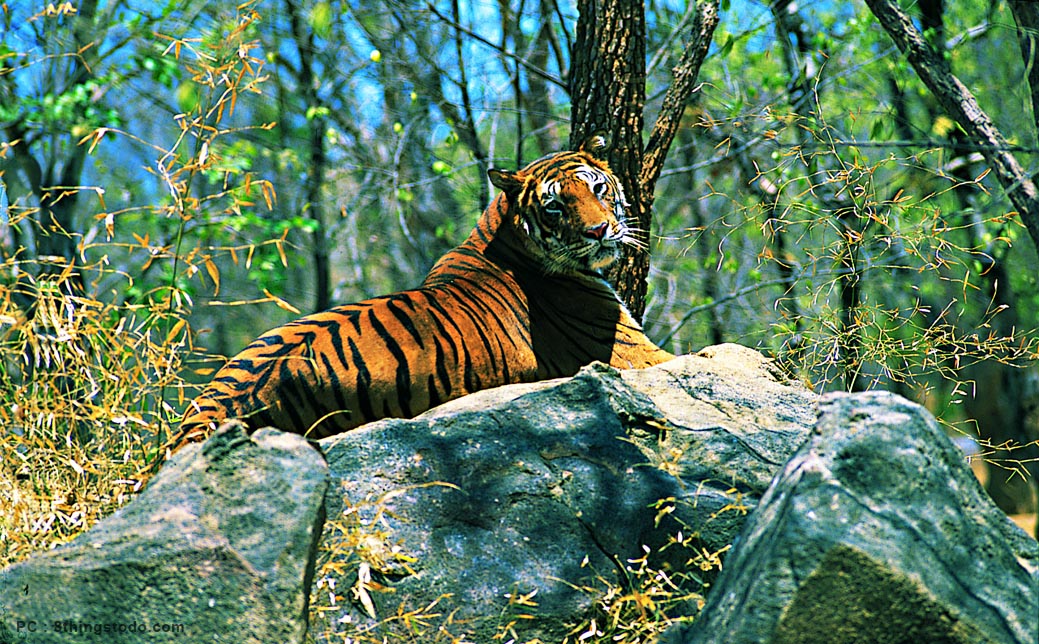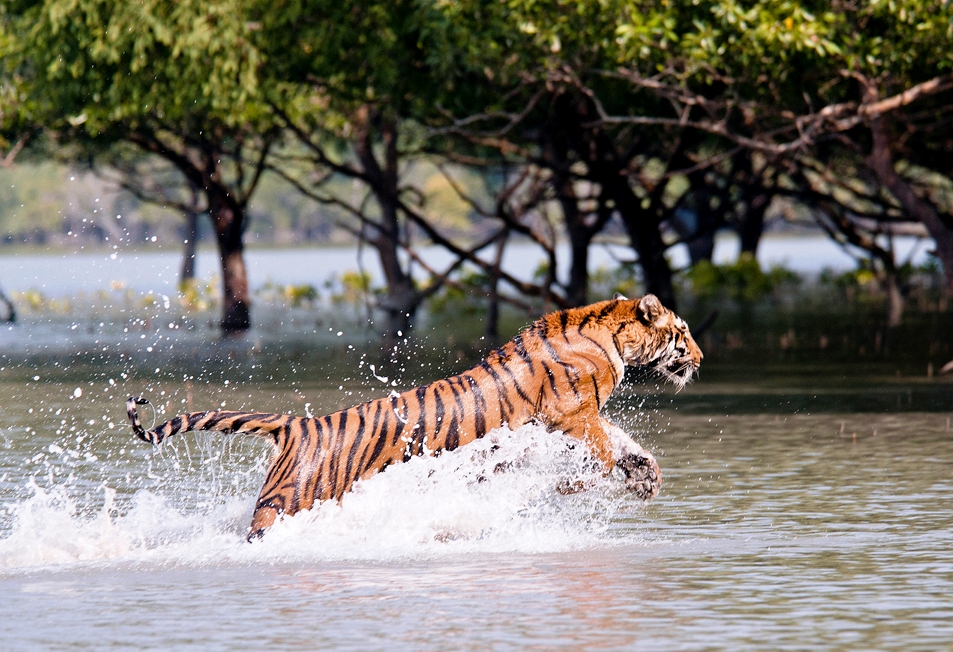
Sunderbans National Park
Sundarbans National Park: The Sunderbans National Park is home to the Royal Bengal tiger, and is a part of the world’s largest delta formed by the Ganga and Brahmaputra. It is also known for its unique mangrove forest ecosystem. The reserve spreads across 2,585 sq km, 0 to 10 m above sea level. It is a tiger and biosphere reserve and has been designated as world heritage site by UNESCO. It extends about 260 km along the Bay of Bengal
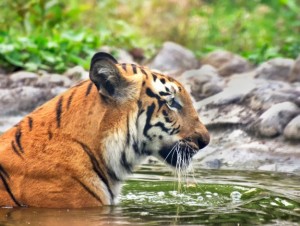
from the Hooghly River Estuary (India) to the Meghna River Estuary in Bangladesh. The forest passes into a mangrove swamp along the coast. The southern region, with numerous wild animals and crocodile-infested estuaries, is virtually devoid of habitation.
There are a large number of activities that can be undertaken at the Sunderban National Park, together with observing the wildlife such as the chital, crocodile, monkeys, estuarine and marine turtle, dolphins and various kinds of birds. For instance, a cruise through the largest estuarine delta in the world is a thrilling experience that might even give you a glimpse of the majestic tiger. You could also come across rich tribal folklore, and woodcutters, honey collectors and fishermen out in the wild working for their survival.
The word “Sunderban” is derived from sundari and ban, which, when combined, means “the forests of sundari”-an obvious reference to the large mangrove trees. Sunderban has a variety of forests such as the mangrove scrub, littoral forest, salt water mixed forest, brackish water mixed forest, wet forest, wet alluvial grass forest, etc. the distribution of wildlife and vegetation is even throughout the Sunderban area.
The tiger reserve in Sunderban is a major tourist attraction. The number of tigers in this reserve is among the highest in the country. According to a census conducted in the 1980, the population of tiger here was close to 400. Besides the tiger, other forms of wildlife also inhabit these mangrove forests. The Gangetic dolphin, little porpoise, fishing cat, Indian fox, jungle cat, small Indian civet, common grey mongoose, spotted deer, wild pig, Indian flying fox, rhesus monkey and pangolin are some of the residents here.
The vast swampy delta of the two great Indian rivers, Brahamaputra and the Ganges extends over areas comprising of mangrove forests, swamps and forest island all interwoven in a network of small rivers and streams. The Sundarbans National Park, home of the Royal Bengal Tiger, covering an area of approximately 1330.10-sq-kms and the largest mangrove forest in the world, form the core of this area. The Sundarban region has got its name from Sundari trees, once found in abundance here.

The Ganges and the Brahmaputra form this alluvial archipelago of 54 islands watered by the Bay of
Bengal. The islands Goasaba, Sandeshkali and Basanti form the northern boundary of the Sundarbans; on the south is the sea; to the west side of the Sunderbans park is the Matla and Bidya Rivers and to the east is the international boundary of Bangladesh.
Flora in Sundarbans National Park: Fascinating life forms await you in this largest estuarine delta in the world, Sunderbans. In April and May the flaming red leaves of the Genwa, edge the emerald islands. The crab like red flowers of the Kankara and the yellow blooms of Khalsi add to the dazzling display. As you penetrate into the forests of Sundarbans, this fairyland unfolds its mysterious beauty.
Major Wildlife Attractions of Sundarbans National Park: The Sundarbans forest is home to more than 400 tigers. The Bengal Tigers have adapted themselves very well to the saline and aqua environs and are extremely good swimmers. As you enter the adventurous wild land of the Sundarbans you’ll be thrilled to see the Chital Dear and Rhesus Monkey. The aqua fauna of Sundarbans include variety of fishes, red Fiddler Crabs and Hermit Crabs.
There are crocodiles, which can be often seen along the mud banks. Sundarbans national park is also noted for its conservation of the Ridley Sea Turtle. There’s is a incredible variety of reptiles also found in Sundarbans, which includes King Cobra, Rock Python and Water Monitor. The endangered river Terrapin, Batagur Baska is found on the Mechua Beach, while the Barkind Deer is found only in Holiday Island in Sunderbans.
Other Attractions In Sundarbans national Park
The Sajnakhali Sanctuary: The bird sanctuary at Sajnekhali contains a wide variety of birds. The most noteworthy among them are spotted billed pelican, cotton teal, herring gull, Caspian tern, grey heron, large egret, night heron, open-billed stork, white ibis, common kingfisher, brahmini kite and paradise flycatcher. The area is also important for waders, including the Asian dowitcher (Limnodromus semipalmatus), a rare winter migrant.

The Sajnakhali sanctuary, famous for its rich avian population, is regarded as a part of the Sunderbans National Park. The kingdom of birds at Sajnekhati enchants your eyes. The most sought after sights by a bird watcher are seven colourful species of Kingfisher, white bellied Sea Eagle, Plovers, Lap-Wings, Curfews, Whimbrels, Sandpipers and occasional Pelican.
Netidhopani: At Netidhopani, the ruins of a 400 year old temple and legends lend mystery to the atmosphere.
Bhagabatpur: Bhagabatpur is famous for having a hatchery of the largest estuarine crocodiles in the world.
Kanak: Kanak is the nesting place of the Olive Ridley Turtles.
Haliday Island: Haliday island is famous as last retrest of Barking Dear in India.
Piyali: Piyali is the gatway to Sundarbans, 72-kms from Kolkatta by road and close to Sajnekhali, Sudhanyakhali, Netidhopani through waterways. A small river Piyali flows through the green paddy fields and mingles with river Matla. Picturesque Piyali delta makes an ideal romantic holiday destination. A beautiful tourist complex with accommodation and recreation facilities is also situated over here.
Kaikhali: On your way to Sundarbans you cannot afford to miss Kaikhali Island, where nature is so alive and so colourful. An ideal picnic spot.
Best Time to Visit Sunderbans National Park: The ideal time to visit the Sundarbans national park is during the months of September and May. Winter make the time to see the mighty Royal Bengal Tiger sun-bathing on the river banks.
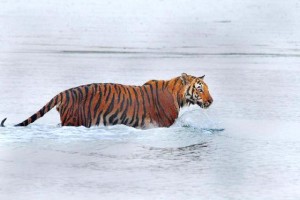
How to Get to Sunderbans National Park:
Air: The nearest airport is Kolkatta, at 112-kms.
Rail: Canning is nearest railhead, at a distance of 48-kms.
Road: Road transportation is available from Kolkatta for Namkhana (105-kms), Sonakhali (100-kms), Raidighi (76-kms), Canning (64-kms), and Najat (92-kms), which are all near the Sunderbans and have access to the riverine waterways leading to it.
Waterways: Sundarbans are accessible only by riverrine waterways. Motor launch facilitiy are available from Namkhana – Bhagabatpur Crocodile Project- Sagar Island -Jambudwip; from Sajnekhali – Sudhanyakhali-Buridabri- Netidhopan-Holiday Island; from Sonakhali – Gosaba; from Raidighi – Kalas.
General Info / Tips
Permits: For Foreigners for Tiger Projects & Sajnekhali,
Contact: Secretary, West Bengal Forest Department, Writer’s Blidge, Kolkatta – 700001, on request.
Permit For Other Areas of the Sundarbans: Field Director, Sundarbans Tiger Reserve, PO Canning, District 24 Parganas, West Bengal

